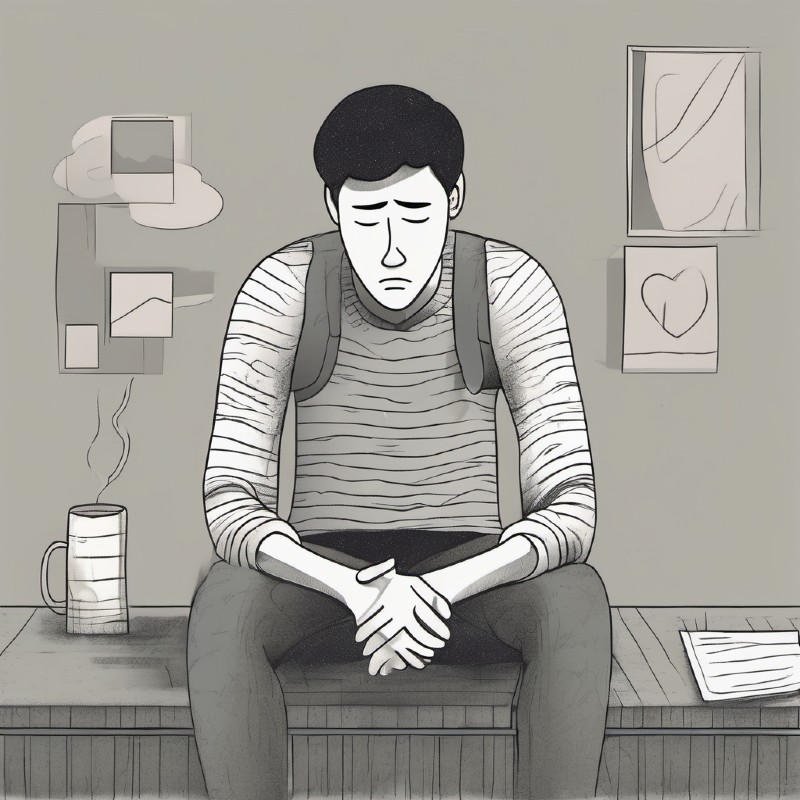
Music holds a key role in human culture, touching our emotions and serving various purposes through time. This post explores the role of music in easing pain, delving into music therapy, a field dedicated to using tunes as a tool to lessen pain’s impact.
Over time, music therapy has caught a lot of attention, rooted in the idea that certain sounds, chords, and melodies can deeply influence our moods, stress levels, and even how we feel pain. Music can clearly shift our emotional state with the effect of switching our brain away from the discomfort we feel, even if for a brief period of time.
Through careful selection of music that aligns with an individual’s preferences and emotional needs, music activates a unique pathway to comfort. This therapeutic approach taps into music’s inherent ability to bypass the clutter in our minds, hitting the pause button on pain and allowing a moment of escape.
The power of sound can be a powerful ally in our quest for more pain-free moments. It underlines the notion that sometimes, the simplest melodies hold the keys to unlocking profound changes in our emotional and physical landscapes.

Recent work has looked into how music might work alongside usual ways of easing pain. Often, pain can seriously harm how well someone lives their life, and the usual health treatments might not always do enough to help or they could cause bad side effects. Here, music steps in as a gentle and safe choice that seems to help some folks deal with their pain better.
With new insights into how our bodies handle pain and the growth of music therapy methods, health care workers are beginning to use music more in their plans to help people feel better, and they’re seeing good results.

Various theoretical frameworks can explore the relationship between music and pain relief. They investigate how musical elements may influence a patient’s experience of pain. Control theory and pain perception play vital roles in these interactions.
Control theory and pain perception play vital roles in these interactions.
Gate Control Theory of Pain posits that the spinal cord contains a neurological “gate” that either allows or blocks pain signals from reaching the brain. Music may potentially influence this gate, altering a patient’s pain experience. Listening to music has the potential to distract from painful stimuli, therefore modifying the perception of pain. For more on this theory, see the effects of music on pain perception here.
Another concept highlights music’s ability to promote mind-body interactions that lead to pain relief. It suggests that trained music therapists can facilitate positive psychological states, which may influence pain responses.
The cognitive mechanisms in music interventions address imagery and aesthetic interaction. These mechanisms suggest that listening to music may create mental images or engage aesthetic appreciation that helps manage pain.
In summary, these theories suggest that music’s impact on pain may range from direct modulation of pain signals to enhancing patient control and altering pain perception.

Music therapy employs a range of techniques to address pain management. It is facilitated by certified music therapists who tailor interventions to individual patient needs. The objective is to alleviate discomfort, enhance mood, and provide tools for self-management of chronic pain.
Clinical Music Therapy involves structured sessions with a certified music therapist, focusing on achieving specific therapeutic outcomes. These music therapists employ individualized music-based interventions, which might include:
These techniques are evidence-based and rooted in research, supporting their efficacy in pain management. For example, a study highlights music therapy’s positive effects on postoperative pain relief in gynecological patients.
Non-clinical applications of music for pain relief refer to ways individuals can use music in their environment to manage pain. These may not require the direct involvement of a music therapist but can be informed by principles of music therapy. Key strategies include:
These applications benefit from the insights of music therapy research, corroborating the role of music in alleviating pain and improving the overall patient experience.

Recent research has delved into the potential of music as a non-pharmacological adjunct for pain management. In some randomized controlled trials, patients who engage in music therapy experience decreased pain intensity.
A study published in Science Direct highlighted that music can enhance medical therapies and synergize with existing pain management programs to improve outcomes. However, how music facilitates pain relief remains a matter of investigation, with theories such as the gate control theory of pain postulated as explanations.
Chronic pain patients have also benefited from music therapy. An umbrella review in Science Direct concluded that music interventions effectively manage pain across various patient populations and settings. This review included studies that scrutinized different genres of music and their impact on pain perception.
Regarding quantifiable benefits, patients report a significant level of pain relief when exposed to music. An LWW journal article noted that expectations play a role in this process; individuals anticipating pain reduction through music often experience lower pain levels and feel a sense of control over their discomfort.
Music’s efficacy for pain relief also depends on the patient’s musical preferences, according to research listed in EBSCOhost. Personalized music selections tailored to the individual’s taste may lead to better outcomes in pain reduction strategies.

Understanding the nuances of music’s influence reveals that it can serve as a powerful mechanism for managing mental and physical health issues. Listening to music has been demonstrated to alleviate symptoms of anxiety, stress, and depression while also making measurable changes in physiological markers such as blood pressure.
Music listening is a therapeutic tool that may enhance mental health by reducing symptoms of anxiety, mitigating the effects of stress, and providing relief from depression. Studies have shown that engagement with music can trigger positive memories, which contribute to a person’s quality of life.
The therapeutic potential of music extends to reducing the reliance on opioids traditionally prescribed for anxiety and depression, offering a non-pharmacological approach to improving mental health.
The impact of music on physical health is evident in its ability to alter physiological states and direct patient outcomes toward improved health. Listening to music can reduce heart rate and blood pressure, indicators of relaxation and stress.
This has implications for pain management, where the appropriate use of music can result in diminished pain perception, potentially enhancing a patient’s quality of life without reliance on pharmacological interventions.

The effective use of music for pain relief hinges on the personalized curation of playlists and the integration of music into daily routines. This allows individuals to experience the benefits of music as a tool for relaxation, distraction, and guided imagery during exercise or other activities.
Creating personalized playlists is essential to match music to an individual’s preferences and the specific context in which they seek pain relief.
Careful selection of tracks allows for:
It’s recommended that individuals select music that they find comforting, as their emotional response to the music can significantly influence its effectiveness.
For music listening to be a consistent part of pain management, one should incorporate music into their daily routine.
Here’s how:
Making music listening a regular practice can complement traditional pain management strategies and contribute to overall well-being.

This section addresses common inquiries regarding the interplay between music and pain relief, providing evidence-based responses illuminating the subject.
Music that elicits relaxation, such as classical or ambient genres, is often used in pain management strategies. Studies show that individual preference plays a significant role in the effectiveness of music in relieving pain.
Frequency modulation in music can create a soothing effect. The theory suggests that certain frequencies can influence brainwave patterns, potentially decreasing pain perception.
Clinical research and controlled trials suggest that music can be an effective intervention for pain management. Music provides a non-invasive, safe, and readily accessible option for individuals suffering from various types of pain.
Listening to music has been associated with a decrease in the consumption of pain medication post-surgery. It may complement traditional pain management approaches by providing an additional non-pharmacological tool to alleviate discomfort.
Soft, rhythmic music or nature sounds may alleviate nerve pain. These sounds can engage the brain in a manner that distracts from pain signals, though personal preferences should guide the specific selections.
Music therapy can help in pain and inflammation treatment through relaxation techniques, guided imagery, and active engagement in music-making. These approaches can facilitate pain relief by reducing stress and improving mood.
“The Efficacy and Safety of Gabapentinoids in Total Joint Arthroplasty:” by Charles P. Hannon, Yale A. Fillingham et al.. https://ir.lib.uwo.ca/boneandjointpub/1157/
Miskon, Azizi, et al. “2-channel Defence Transcutaneous Electrical Stem Stimulator (DTES).” 2014, https://doi.org/10.1109/iecbes.2014.7047469.
Miskon, Azizi, et al. “2-channel Defence Transcutaneous Electrical Stem Stimulator (DTES).” 2014, https://doi.org/10.1109/iecbes.2014.7047469.
What is Music Therapy? – Text Answer. https://www.textanswer.com/what-is-music-therapy/
Eidelman, David H. “Pain: Towards a Comprehensive Understanding and a Definition.” Medical Hypotheses, 1981, https://doi.org/10.1016/0306-9877(81)90099-2.
The Transformative Power of Mindfulness and Meditation: Unveiling the Benefits for Mental and Physical Well-being. https://www.singaporeatriumsale.com.sg/post/the-transformative-power-of-mindfulness-and-meditation-unveiling-the-benefits-for-mental-and-physical-well-being
